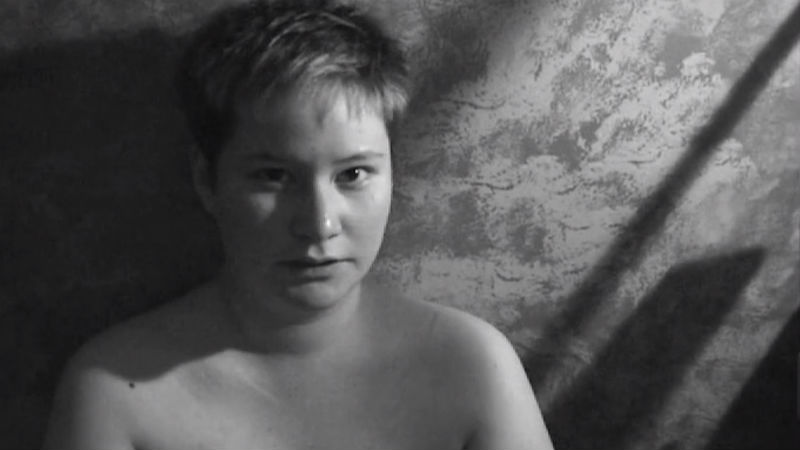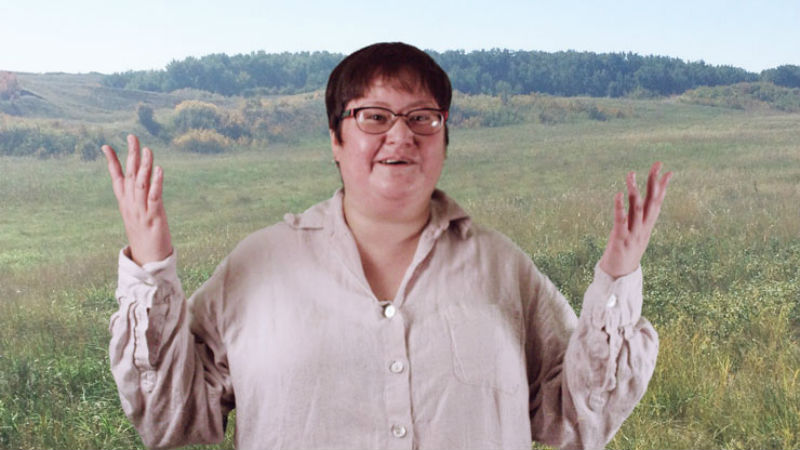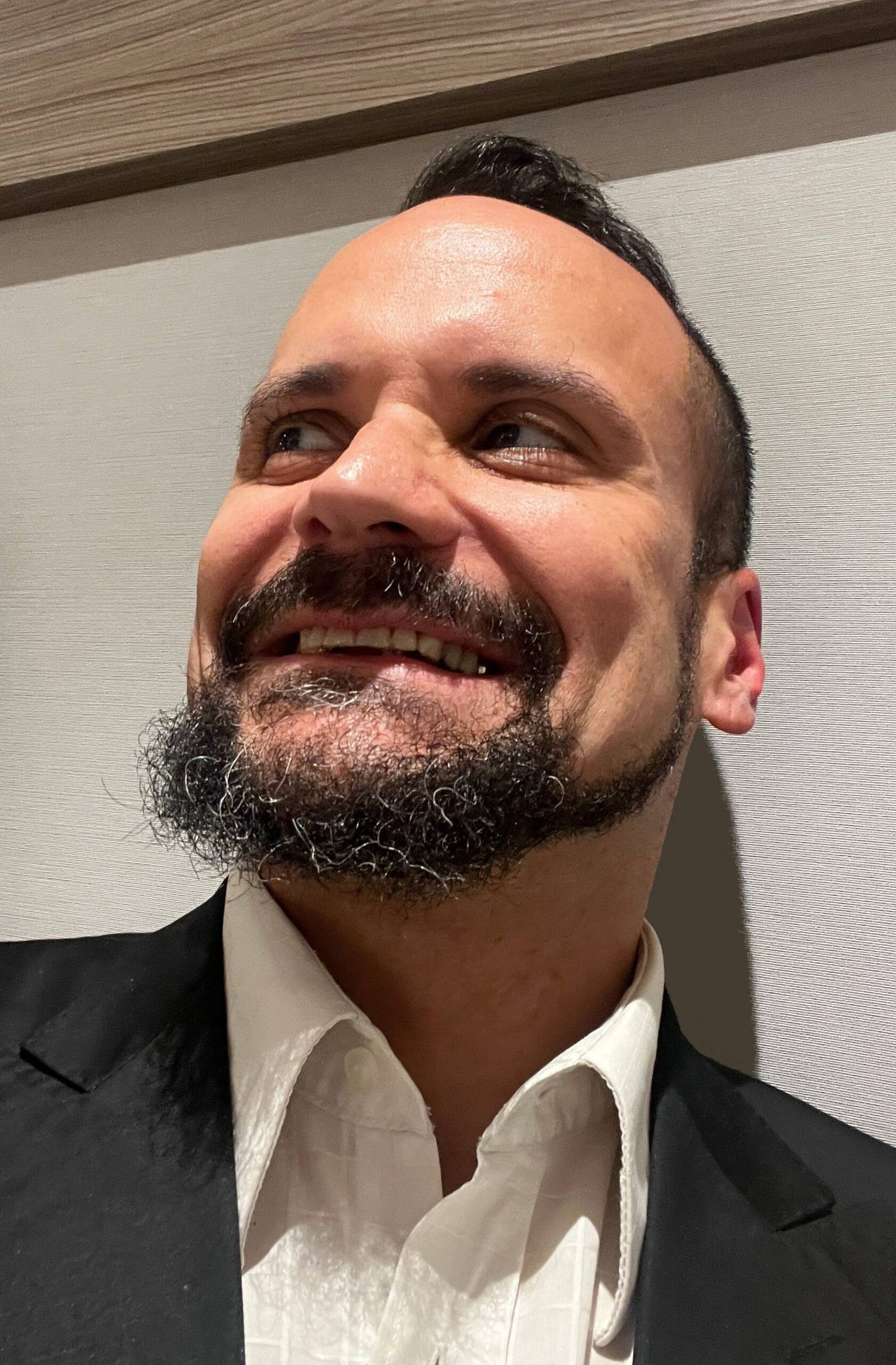




Born in Regina and raised in Saskatoon, in the South-Central Canadian province of Saskatchewan, Thirza isn’t your average Indigenous filmmaker. This Cree artist has been making audacious and experimental short movies since 1995 delving into the topics of LGBT sexuality and identify, while also questioning and toying with the boundaries sanity. Her work fits in very well with our dirty movie concept.
She graduated in Film in the Emily Carr University of Art and Design of Vancouver in 2005. She has since exhibited her work in numerous galleries, festivals and events in various countries and on both sides of the Atlantic. She currently resides in Toronto. She’s now in London for the 13th Native Spirit Festival in order to showcase a selection of her work carefully picked exclusively for you.
Thirza Cuthand presents her retrospective of 10 short films at the Horse Hospital in London at 14:00 on Sunday, October 13th. The screenings will be followed by a talk. Click here for our review of the superb retrospective, and here in order to book your tickets now.
Victor Fraga – How did you first become involved in film? Were you the first Cree filmmaker ever, or was there a tradition beforehand?
Thirza Cuthand – There were other Cree filmmakers, I’m thinking like Loretta Todd, my Uncle Doug Cuthand makes films, there’s been a number of Cree filmmakers I can’t even think of them all. I find Cree women filmmakers were very encouraging when I was an emerging filmmaker. Actually many other Indigenous women filmmakers were very nurturing of my skills. My friend Dana Claxton was really great to connect with when I was starting out, she is a Lakota filmmaker based in Vancouver. I first became involved in film through a Queer film festival in Saskatoon called Virtuous Reality. It only ever happened once in 1995. Since then Saskatoon got obsessed with But I’m A Cheerleader (Jamie Babbit, 2001) and I swear that’s the only Queer film they wanna watch.
I made a short film called Lessons In Baby Dyke Theory (1995, see it below) about feeling like the only lesbian at my high school. I was 16 when I made it, with a cheap hi-8 camcorder. And a lot of pipe cleaner dollies. It became really successful on the Queer film fest circuit because there was not a lot of work being made about being a teenage Queer. Mostly when people talked about Queer Youth at the time they were picturing university students. But now of course there’s like, Queer kindergarteners so things have really shifted.
VF – How have the indigenous communities embraced Indigiqueer identity? Did you have to overcome tradition, or barriers of any type?
TC – It’s been varied. I grew up in urban communities which I found were way more open minded than if I had grown up on a reserve. But then also all the reserves have different climates. Some are more Christian and Christian-influenced than others. I was fortunate in that my mother was very Queer-positive so there wasn’t a lot of hardships at home, and my high school didn’t even know what to do with me. I do know that one of the barriers has been funding. I do get funding but usually it comes from the regular funding stream and not the stream for Indigenous people at the arts councils.
There’s also some difficulties in that people want to protect Indigenous culture so I feel like there’s a fine line between protecting ourselves and censoring artists. I know the queer work I make is not always appreciated by some of those juries, especially the more sexually suggestive work. I think repression of Indigenous sexuality in all its forms, including heterosexual sexuality, has been a big issue for us as media makers. And when it’s Queer on top of that, it gets really tough. The effects of Residential School has left a huge vein of homophobia and transphobia in its wake. I have a hard time with it, because I do understand people who have been abused by same sex perpetrators sort of view Queer society through that lens, but at the same time child sexual abuse is not Queer culture and it’s hard to explain that to some survivors of those crimes.
VF – How do you transpose oral storytelling onto cinema? Is it any difference from written literature? What are the biggest challenges, and the most beautiful and unique aspects?
TC – My videos are often told in a similar manner to the way my grandfather would tell stories his parents and grandparents would tell him, like a monologue with a sort of larger meaning attached. Cree stories can be very funny, and some can be very sexually explicit too (although I never heard those ones from my grandpa but there is a well known story about a rolling disembodied head that keeps trying to offer sexual favours as it follows this person). I think the difference from written literature is that oral stories grow and change with time, they are living texts. It’s harder to do that with videos, but I also do performance art and that can work the same way. I think the biggest challenges are that I can’t see how people react to a story until the film is finished and I’m watching with an audience. While an oral story you might be able to read the room and like, drop parts that don’t work for that audience. Like maybe there are people like your family in the room who you don’t want to tell that part about a disembodied head offering blowjobs in front of!
The beautiful and unique aspects are that a story could be passed down from generations and generations previously. I heard a story from my grandfather about the first time Crees saw white people, and I am still struck by how remarkable it is to know what happened. I also recently made a film based on another story he told my auntie Beth about a 2 Spirit person (2 Spirit is a term for Queer/Trans Indigenous people used by some Queer/Trans Indigenous people) who was a travelling storyteller, and it was really wonderful to not only be able to make that story more widely known as a film, but also to sort of have proof that 2 Spirit people were accepted and welcomed before colonisation. Oral stories give us a history that has been used to stand up in court cases here in Canada.

VF – You said that “humour is a political tool”. Can you please give us an example of how you used comedy in order to make a statement, raise awareness of an issue, or something else?
TC – My film series 2 Spirit Introductory Special $19.99 (2015) and 2 Spirit Dreamcatcher Dot Com (2017) are very comedic films, but also use the tropes of late night TV commercial formats to critique things like domestic violence in lesbian relationships, isolation in remote communities as a Queer person, capitalist values based on how big your communities are and if you are worth having media targeted towards your demographics. A lot of other things too. But mostly they come across as very light fun films. You don’t think about the heavy stuff even though it’s all in there. I think humour helps people be more open to ideas that they might shut down otherwise.
VF – Has the Canadian government been supportive of indigenous film and performance art? Who has supported you in your endeavours?
TC – I’ve gotten funding from almost all levels of government, federal, provincial, municipal. I have been fortunate. I’ve seen other people really struggle but I’ve managed to carve out enough of a career for myself that I’ve been able to be a full time artist. I’ve also made a documentary for CBC Gem, which is a national tv streaming platform, and for the NFB which is a national documentary and animation film studio. But it took a long time of making self-funded videos with my camcorder and myself to get to that point. I think the fact I was so willing to fund so much of my early work really helped my career. I still self-fund the work I think might be too controversial for a funder to touch. There have been some controversies over the years about where taxpayer money goes, so any really sexual work I’ve tried to do on my own.
VF – You describe yourself as “gender non-conforming, Indigenous, Queer, disabled, fat”. Is being non-normative an empowering and liberating experience? How do you reconcile these varied identities?
TC – I think when you rack up a couple of non-normative identities it just makes sense to add more! Ha ha! I think because my identities and interests are outside of the mainstream, it’s made my work more interesting. It can be empowering, there’s been at least a couple times I’ve been trying to find the subcultures I belong to and that is an interesting experience. When I was a teen I had to find the Queer community, and in a small prairie city too, before the internet was a thing and before I was old enough for the bar. So it didn’t take a long time, but I did have to go out looking for it.
And then when I was 18, again without the the internet, I realised I was into kink and that was another search. I think my first contact was getting a subscription to a local kink newsletter, but it stopped distributing as soon as I got the first issue! But it really does make you more independent in a way when you need to work hard at finding your communities, queer and kinky communities. My Indigenous communities were always around because I grew up with my Indigenous family members. But even reconciling Queer and kink identities even just with Indigenous identity is not so hard. There were always Queer Indigenous people, and some ceremonies involved cutting or piercing the flesh, so doing similar things in a kink context is not so wild really. And same with trans/gender-non-conforming identities, there were lots of Indigenous people historically who were gender non-conforming or trans. I think what I like about all these identities is that I can talk honestly from a first person perspective about a lot of issues.

VF – You were once invited to Bruce LaBruce’s Tiff party. He’s one of our favourite “dirty” filmmakers. Did you meet and talk to him? How did that go? What did he think of Indigiqueer film?
TC – I actually didn’t go! I ended up finishing my film about a gas mask fetish I later called Less Lethal Fetishes instead. But I did meet him once at his screening in Regina for LA Zombie (2010), which I loved. Fucking dead people back to life? Amazing! I did talk to him, he seems very nice. We didn’t talk long enough to talk about Indigiqueer film tho!
VF – Is this your first time in Europe? Do Europeans react differently to your work?
TC – I’ve been to Berlin a lot showing my work. I think because Europeans don’t have the full understanding of Indigenous culture and context like people in North America, it’s a little bit different showing work here. There are I am sure preconceived ideas of what Indigenous lives are like, I’ve never talked to Europeans about that though and I think mostly they don’t want to say anything offensive to me about what they might think. I do know I explained payments that were made to Residential School survivors were called “Common Experience Payments” to an audience in Berlin that was pretty queer and open-minded and they sort of recoiled which I think is the best reaction, Common Experience Payments is a terrible name. My grandmother was in Residential School and she said once “They weren’t common experiences! Everyone’s experience was different!”
VF – What are your plans for the future?
TC – I’m working on a feature film about a woman with the power of pyrokinesis [the ability to create and control fire with the mind] who seeks vengeance after her lover and mother go missing, so that’s been exciting. I have wanted to make a feature for a long time. I still really love experimental shorts though, and you can make those so fast with so much less influence from producers and editors and so on that I will probably keep doing that as well. I have a performance coming up in Vancouver called The Future Is So Bright which is going to be audio of me reading love letters to various women trying to convince them to be with me and start a family, while footage of climate change catastrophes like forest fires and glaciers melting and hurricanes and tsunami’s play behind me. And I’ll be licking and sticking hard candies to my nude body trying to sweeten the deal. I’m super interested in the feelings of the world ending that so many have right now. I want to be hopeful, but I am also aware we have an incredible responsibility to the future of humanity and the world right now and we could blow it!





















